Do you have a question about the Samsung UE40NU7120K and is the answer not in the manual?
Learn how to connect the Samsung Smart Remote to your TV to operate it.
View a list of notifications for all events that occur on your TV.
Access quick settings icons for frequently used functions.
Select an external device connected to the TV.
Search for channels, programmes, movie titles, and apps.
Install and enjoy various content by downloading corresponding apps.
View beautiful screens, visual information, and notifications.
Search and enjoy various content such as TV shows, dramas, and movies.
Use Art Mode to edit image content like artworks or photos.
View beautiful screens, visual information, and notifications.
Understand different screen states like dark and black screen.
Customize content and settings for the Ambient mode display.
Select content and categories to display in Ambient mode.
Adjust settings like brightness, colour tone, and auto brightness.
Change the background colour or pattern for the Ambient mode screen.
Access sources, channels, and e-Manual quickly.
Add, move, or remove broadcast channels.
Speak commands to control the TV.
Learn voice commands for various situations and how to operate the TV.
Understand limitations, requirements, and precautions for using Voice Interaction.
Steps to update the TV's software via the Internet or USB.
Configure automatic software updates for the TV.
Access remote support for TV diagnosis and problem correction.
View contact details, model number, and software version for service.
Request service for TV problems and schedule appointments.
View detailed information about external devices that can be connected to the TV.
Instructions on how to connect an antenna cable to your TV.
Connect to your Internet network via wired or wireless connection.
Connect video devices using HDMI, component, or composite cables.
Connect audio devices using HDMI (ARC), optical cables, or wireless networks.
Connect Bluetooth audio devices to the TV.
Connect your mobile device to the TV via the SmartThings app.
Switch between TV programmes and content from external devices.
Customize the name and icon for connected external devices.
Control external devices with the TV's remote control.
Recommendations and guidelines for using HDMI cables and connections.
Tips for connecting audio devices for optimal audio quality.
Information on connecting computers and network sharing.
Guidelines for connecting mobile devices and sharing content.
Learn about the buttons on the Samsung Smart Remote for QLED TVs.
Learn about the buttons on the Samsung Smart Remote for UHD TVs.
Learn about the buttons on the Samsung Smart Remote for THE FRAME TV.
Details on buttons like Voice Interaction, Colour/Number, Ambient mode, Directional pad, and Select.
Details on buttons like Return, Smart Hub, Play/Pause, Volume, and Channel.
Learn how to pair the Samsung Smart Remote with your TV.
Control external devices with the TV's remote control.
Control external devices supporting Anynet+ (HDMI-CEC) using the TV remote.
Steps to connect an Anynet+ device and access its menu.
Important notes and compatibility information for Anynet+ (HDMI-CEC) devices.
Connect input devices like keyboards and mice for easier TV control.
Details on keyboard and mouse button functions and usage.
Configure keyboard language, type, and mouse settings.
Learn how to use the on-screen virtual keyboard for text input.
Use voice input via the remote's microphone to enter text.
Access apps, games, movies, and more through Smart Hub.
Access the main screen with apps and functions.
Quickly set functions like Picture Mode, Sound Mode, and Sound Output.
Enjoy content by installing corresponding apps on your TV.
Reset Smart Hub settings to default values.
Create and manage your Samsung account for personalized services.
See an overview of each channel's programme lineup.
View programme schedules, information, and set up viewing or recording.
Record programmes using a USB device instead of a video recorder.
Configure the TV to show a specific channel or programme at a specific time.
Pause, play, or rewind live TV using the Timeshift function.
Understand buttons and functions during recording or Timeshift.
Understand limitations and requirements for using the Timeshift function.
Change channels or view programmes on digital channels.
Lock/unlock channels, rename, or change numbers.
Designate frequently watched channels as favourite channels.
Add, remove, rearrange, or rename favourites.
Scan the TV for available channels.
Turn on or off the Apply Channel Lock function.
Control children's viewing by setting programme rating locks.
Set audio options for stereo or bilingual broadcasts.
Scan and store channels manually.
Change the Picture Mode and adjust expert settings for picture quality.
Select picture modes like Dynamic, Standard, Natural, or Movie.
Adjust settings like Backlight, Brightness, Contrast, Sharpness, and Colour.
Optimize TV settings for viewing specific video formats.
Enable game mode to optimize TV settings for video games.
Personalize sound quality by adjusting sound modes and expert settings.
Select sound modes like Standard, Optimised, or Amplify.
Adjust settings like Balance, Equaliser, and Audio Delay.
Choose which speakers the TV uses for audio output.
Connect and listen to TV audio through Bluetooth devices.
Connect Samsung audio devices via Wi-Fi for surround sound.
Set the current time and use the timer function.
Set the TV clock manually or automatically.
Use the sleep timer and off timer functions.
Adjust brightness, power consumption, and prevent overheating.
Scan the TV and connected storage for malicious code.
Access features that aid users with visual or hearing impairments.
Activate voice guides to describe menu options aloud for the visually impaired.
Turn on or off audio description and adjust its volume.
Set high contrast, greyscale, invert colours, and enlarge font.
Learn remote control button positions and TV menu structures.
Set subtitles to On to watch programmes with displayed subtitles.
Use TV speaker and Bluetooth simultaneously for hearing impaired.
Change the language of the TV menus.
Set up a PIN for security and parental controls.
Reset all TV settings to their factory defaults.
Access services from providers through HbbTV.
Insert card for paid channels.
Connect card using adapter.
Learn Teletext usage.
Control Teletext modes like Full TTX, Double TTX, Mix, and Live TV.
Use colour buttons for navigation.
Navigate pages, reveal text.
Get direct Samsung help.
Access remote support for TV diagnosis and problem correction.
Steps to resolve picture problems on your TV.
Steps to resolve sound issues on your TV.
Steps to resolve broadcast reception problems.
Resolve PC/Console and Internet connection issues.
Resolve issues with Recording, Timeshift, Anynet+, and Apps.
Resolve media file playback issues.
Reset TV settings, Smart Hub, Picture, and Sound to factory defaults.
Procedures to resolve various other issues that may occur with the TV.
Read essential instructions before using recording and Timeshift features.
Understand limitations and recommendations for recording functions.
Understand limitations and requirements for using the Timeshift function.
Details on supported audio types and dual sound options.
Read important information before using TV apps.
Read important information before using the Internet on your TV.
Read important information before setting up a wireless Internet connection.
Read important information before playing media content.
List of supported external subtitle formats.
List of supported internal subtitle containers.
List of supported image file extensions, formats, and resolutions.
List of supported music file extensions, formats, and codecs.
Details on video codecs supported by NU7100 or higher models.
Details on video codecs supported by NU7090 or lower models.
Information on supported video and audio decoders.
Table of picture sizes applied to various input signals.
Guide to installing a physical device to protect the TV against theft.
List of resolutions supported for UHD input signals.
Details on resolutions and modes supported for the FreeSync function.
Supported PC input resolutions for IBM and MAC.
List of resolutions supported by VESA DMT standards.
List of resolutions supported by VESA CVT standards.
List of resolutions supported for video signals based on CTA-861.
List of resolutions supported for video signals.
Read information before using Bluetooth devices.
Understand controls for media playback, including pause/play and navigation.
Adjust viewing angle for 360-degree videos and photos.
Set repeat, shuffle, picture off, and other playback options.
Fit photos to screen, zoom, rotate, add background music, and adjust options.
Control video subtitles, sync, size, and audio language.
Information on Dolby, HDMI, Rovi, and other licenses.
Learn the structure and features of TV menus.
Orientation and description of the Samsung Smart Remote.
Access accessibility features like Voice Guide and High Contrast.
Instructions to turn on Voice Guide and Audio Description.
Learn remote control button positions and functions.
Adjust Voice Guide settings like speed and pitch.
Control accessibility features using voice commands.
Use voice guides to describe menu options aloud for the visually impaired.
Learn how to connect the Samsung Smart Remote to your TV to operate it.
View a list of notifications for all events that occur on your TV.
Access quick settings icons for frequently used functions.
Select an external device connected to the TV.
Search for channels, programmes, movie titles, and apps.
Install and enjoy various content by downloading corresponding apps.
View beautiful screens, visual information, and notifications.
Search and enjoy various content such as TV shows, dramas, and movies.
Use Art Mode to edit image content like artworks or photos.
View beautiful screens, visual information, and notifications.
Understand different screen states like dark and black screen.
Customize content and settings for the Ambient mode display.
Select content and categories to display in Ambient mode.
Adjust settings like brightness, colour tone, and auto brightness.
Change the background colour or pattern for the Ambient mode screen.
Access sources, channels, and e-Manual quickly.
Add, move, or remove broadcast channels.
Speak commands to control the TV.
Learn voice commands for various situations and how to operate the TV.
Understand limitations, requirements, and precautions for using Voice Interaction.
Steps to update the TV's software via the Internet or USB.
Configure automatic software updates for the TV.
Access remote support for TV diagnosis and problem correction.
View contact details, model number, and software version for service.
Request service for TV problems and schedule appointments.
View detailed information about external devices that can be connected to the TV.
Instructions on how to connect an antenna cable to your TV.
Connect to your Internet network via wired or wireless connection.
Connect video devices using HDMI, component, or composite cables.
Connect audio devices using HDMI (ARC), optical cables, or wireless networks.
Connect Bluetooth audio devices to the TV.
Connect your mobile device to the TV via the SmartThings app.
Switch between TV programmes and content from external devices.
Customize the name and icon for connected external devices.
Control external devices with the TV's remote control.
Recommendations and guidelines for using HDMI cables and connections.
Tips for connecting audio devices for optimal audio quality.
Information on connecting computers and network sharing.
Guidelines for connecting mobile devices and sharing content.
Learn about the buttons on the Samsung Smart Remote for QLED TVs.
Learn about the buttons on the Samsung Smart Remote for UHD TVs.
Learn about the buttons on the Samsung Smart Remote for THE FRAME TV.
Details on buttons like Voice Interaction, Colour/Number, Ambient mode, Directional pad, and Select.
Details on buttons like Return, Smart Hub, Play/Pause, Volume, and Channel.
Learn how to pair the Samsung Smart Remote with your TV.
Control external devices with the TV's remote control.
Control external devices supporting Anynet+ (HDMI-CEC) using the TV remote.
Steps to connect an Anynet+ device and access its menu.
Important notes and compatibility information for Anynet+ (HDMI-CEC) devices.
Connect input devices like keyboards and mice for easier TV control.
Details on keyboard and mouse button functions and usage.
Configure keyboard language, type, and mouse settings.
Learn how to use the on-screen virtual keyboard for text input.
Use voice input via the remote's microphone to enter text.
Access apps, games, movies, and more through Smart Hub.
Access the main screen with apps and functions.
Quickly set functions like Picture Mode, Sound Mode, and Sound Output.
Enjoy content by installing corresponding apps on your TV.
Reset Smart Hub settings to default values.
Create and manage your Samsung account for personalized services.
See an overview of each channel's programme lineup.
View programme schedules, information, and set up viewing or recording.
Record programmes using a USB device instead of a video recorder.
Configure the TV to show a specific channel or programme at a specific time.
Pause, play, or rewind live TV using the Timeshift function.
Understand buttons and functions during recording or Timeshift.
Understand limitations and requirements for using the Timeshift function.
Change channels or view programmes on digital channels.
Lock/unlock channels, rename, or change numbers.
Designate frequently watched channels as favourite channels.
Add, remove, rearrange, or rename favourites.
Scan the TV for available channels.
Turn on or off the Apply Channel Lock function.
Control children's viewing by setting programme rating locks.
Set audio options for stereo or bilingual broadcasts.
Scan and store channels manually.
Change the Picture Mode and adjust expert settings for picture quality.
Select picture modes like Dynamic, Standard, Natural, or Movie.
Adjust settings like Backlight, Brightness, Contrast, Sharpness, and Colour.
Optimize TV settings for viewing specific video formats.
Enable game mode to optimize TV settings for video games.
Personalize sound quality by adjusting sound modes and expert settings.
Select sound modes like Standard, Optimised, or Amplify.
Adjust settings like Balance, Equaliser, and Audio Delay.
Choose which speakers the TV uses for audio output.
Connect and listen to TV audio through Bluetooth devices.
Connect Samsung audio devices via Wi-Fi for surround sound.
Set the current time and use the timer function.
Set the TV clock manually or automatically.
Use the sleep timer and off timer functions.
Adjust brightness, power consumption, and prevent overheating.
Scan the TV and connected storage for malicious code.
Access features that aid users with visual or hearing impairments.
Activate voice guides to describe menu options aloud for the visually impaired.
Turn on or off audio description and adjust its volume.
Set high contrast, greyscale, invert colours, and enlarge font.
Learn remote control button positions and TV menu structures.
Set subtitles to On to watch programmes with displayed subtitles.
Use TV speaker and Bluetooth simultaneously for hearing impaired.
Change the language of the TV menus.
Set up a PIN for security and parental controls.
Reset all TV settings to their factory defaults.
Access services from providers through HbbTV.
Insert card for paid channels.
Connect card using adapter.
Learn Teletext usage.
Control Teletext modes like Full TTX, Double TTX, Mix, and Live TV.
Use colour buttons for navigation.
Navigate pages, reveal text.
Get direct Samsung help.
Access remote support for TV diagnosis and problem correction.
Steps to resolve picture problems on your TV.
Steps to resolve sound issues on your TV.
Steps to resolve broadcast reception problems.
Resolve PC/Console and Internet connection issues.
Resolve issues with Recording, Timeshift, Anynet+, and Apps.
Resolve media file playback issues.
Reset TV settings, Smart Hub, Picture, and Sound to factory defaults.
Procedures to resolve various other issues that may occur with the TV.
Read essential instructions before using recording and Timeshift features.
Understand limitations and recommendations for recording functions.
Understand limitations and requirements for using the Timeshift function.
Details on supported audio types and dual sound options.
Read important information before using TV apps.
Read important information before using the Internet on your TV.
Read important information before setting up a wireless Internet connection.
Read important information before playing media content.
List of supported external subtitle formats.
List of supported internal subtitle containers.
List of supported image file extensions, formats, and resolutions.
List of supported music file extensions, formats, and codecs.
Details on video codecs supported by NU7100 or higher models.
Details on video codecs supported by NU7090 or lower models.
Information on supported video and audio decoders.
Table of picture sizes applied to various input signals.
Guide to installing a physical device to protect the TV against theft.
List of resolutions supported for UHD input signals.
Details on resolutions and modes supported for the FreeSync function.
Supported PC input resolutions for IBM and MAC.
List of resolutions supported by VESA DMT standards.
List of resolutions supported by VESA CVT standards.
List of resolutions supported for video signals based on CTA-861.
List of resolutions supported for video signals.
Read information before using Bluetooth devices.
Understand controls for media playback, including pause/play and navigation.
Adjust viewing angle for 360-degree videos and photos.
Set repeat, shuffle, picture off, and other playback options.
Fit photos to screen, zoom, rotate, add background music, and adjust options.
Control video subtitles, sync, size, and audio language.
Information on Dolby, HDMI, Rovi, and other licenses.
Learn the structure and features of TV menus.
Orientation and description of the Samsung Smart Remote.
Access accessibility features like Voice Guide and High Contrast.
Instructions to turn on Voice Guide and Audio Description.
Learn remote control button positions and functions.
Adjust Voice Guide settings like speed and pitch.
Control accessibility features using voice commands.
Use voice guides to describe menu options aloud for the visually impaired.
| Screen shape | Flat |
|---|---|
| Response time | - ms |
| Display diagonal | 40 \ |
| Display brightness | - cd/m² |
| Display technology | LED |
| Native aspect ratio | 16:9 |
| Display diagonal (metric) | 101 cm |
| Motion interpolation technology | PQI (Picture Quality Index) 1300 |
| Dynamic contrast ratio marketing name | Mega Contrast |
| 3D | No |
| Annual energy consumption | 87 kWh |
| Tuner type | Analog & digital |
| Analog signal format system | - |
| Digital signal format system | DVB-C, DVB-T2 |
| Video apps | Amazon Prime Video, Netflix, YouTube |
| Smart modes | Game, Movie, Natural |
| Audio decoders | Dolby Digital, Dolby Digital Plus |
| RMS rated power | 20 W |
| Number of speakers | 2 |
| Multiroom audio technology | Samsung Multiroom Link |
| Product color | Black |
| Processor cores | 4 |
| Picture processing technology | Samsung Auto Motion Plus, Samsung Contrast Enhancer |
| High Dynamic Range (HDR) technology | High Dynamic Range (HDR) 1500, High Dynamic Range 10+ (HDR10 Plus), Hybrid Log-Gamma (HLG) |
| Number of OSD languages | 27 |
| HDMI ports quantity | 3 |
| DVI-D ports quantity | 0 |
| USB 2.0 ports quantity | USB 2.0 ports have a data transmission speed of 480 Mbps, and are backwards compatible with USB 1.1 ports. You can connect all kinds of peripheral devices to them. |
| Component video (YPbPr/YCbCr) in | 1 |
| Consumer Electronics Control (CEC) | Anynet+ |
| Common interface Plus (CI+) version | 1.4 |
| AC input voltage | 220 - 240 V |
| AC input frequency | 50 - 60 Hz |
| Power consumption (standby) | 0.5 W |
| Power consumption (typical) | 63 W |
| Package type | Box |
| Package depth | 144 mm |
| Package width | 1021 mm |
| Package height | 626 mm |
| Package weight | 12200 g |
| Cables included | AC |
| Remote control type | TM1240A |
| Depth (with stand) | 210.3 mm |
|---|---|
| Height (with stand) | 604.2 mm |
| Weight (with stand) | 8800 g |
| Depth (without stand) | 58.8 mm |
| Width (without stand) | 913.7 mm |
| Height (without stand) | 531.5 mm |
| Weight (without stand) | 8600 g |
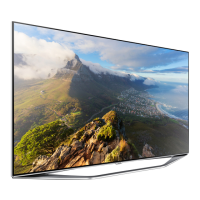

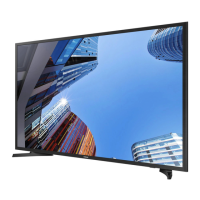


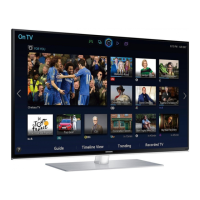




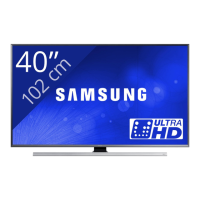
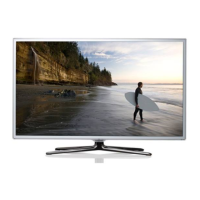
